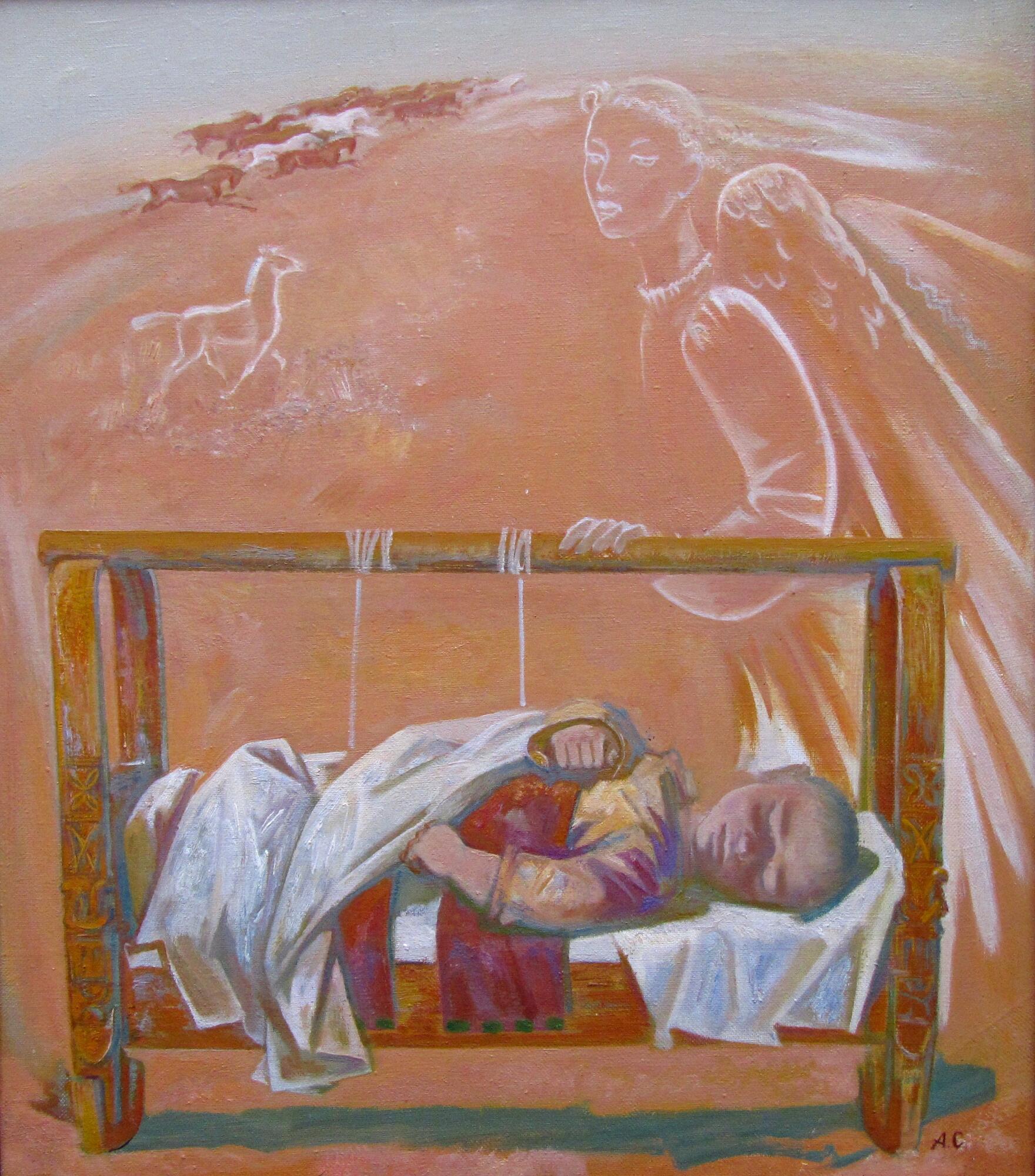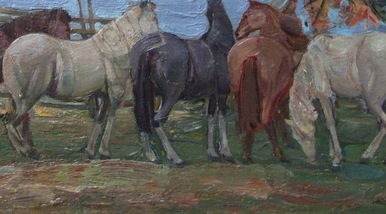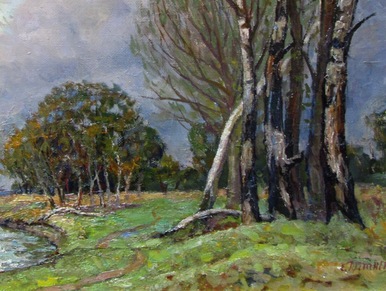Artist Sultan Abaev created the allegorical painting “Dream” which is housed in the Memorial Complex of Glory in 1982.
Allegory is an artistic representation of ideas with the help of a specific image. Often in allegorical works, animals and plants, mythological and fairy-tale characters, household and sacred objects received a figurative meaning. For example, death was allegorically depicted as a scythe and a clepsydra — a water clock.
In this work, Sultan Abaev depicts aspirations and dreams of infancy. In the foreground, he painted a sleeping child in a cradle.
The traditional Chechen wooden cradle is called aga. Initially, they were cut out from a solid tree trunk with a hollowed-out core, where the child was placed. Then it was mounted on arc-shaped transverse rockers. A cutout was made at the bottom and a tubular lamb bone was inserted as a drain pipe so that the child always remained dry. Nowadays, an aga is a small crib with boards on curved rockers, and the drain has been replaced with diapers.
In the upper left corner of the painting, the artist depicted a herd of horses of white and chestnut colors, and they are about to be joined by another horse depicted in the same style as the angel.
Sultan Abaev was born on November 1, 1954 in the village of Khaidarkan, Osh region of the Kyrgyz Soviet Socialist Republic, during the period when the Ingush and the Chechen were exiled from their native land. He started painting early in his childhood.
In 1958, the family returned to their homeland. In the late 1960s, Sultan Abaev studied at the Grozny Art Studio and at an art school. Artist Viktor Lamtyugin was his teacher. In 1978, Abaev graduated from the Makhachkala Art College, and in 1987 — the Ilya Repin Institute of Painting, Sculpture and Architecture.
Nowadays, Sultan Abaev lives in St. Petersburg. His workshop previously belonged to the famous artist Vasily Vereshchagin. Abaev’s works are housed in private collections in Germany, China, the USA, Poland, Japan and other countries.
Allegory is an artistic representation of ideas with the help of a specific image. Often in allegorical works, animals and plants, mythological and fairy-tale characters, household and sacred objects received a figurative meaning. For example, death was allegorically depicted as a scythe and a clepsydra — a water clock.
In this work, Sultan Abaev depicts aspirations and dreams of infancy. In the foreground, he painted a sleeping child in a cradle.
The traditional Chechen wooden cradle is called aga. Initially, they were cut out from a solid tree trunk with a hollowed-out core, where the child was placed. Then it was mounted on arc-shaped transverse rockers. A cutout was made at the bottom and a tubular lamb bone was inserted as a drain pipe so that the child always remained dry. Nowadays, an aga is a small crib with boards on curved rockers, and the drain has been replaced with diapers.
An angel is depicted behind the cradle in the right part of the canvas. It puts its hand on the upper crossbar of the cradle and rocks the baby so that it sleeps more soundly. Abaev painted only a faint outline of the angel, emphasizing that it does not belong to the real world.
In the upper left corner of the painting, the artist depicted a herd of horses of white and chestnut colors, and they are about to be joined by another horse depicted in the same style as the angel.
Sultan Abaev was born on November 1, 1954 in the village of Khaidarkan, Osh region of the Kyrgyz Soviet Socialist Republic, during the period when the Ingush and the Chechen were exiled from their native land. He started painting early in his childhood.
In 1958, the family returned to their homeland. In the late 1960s, Sultan Abaev studied at the Grozny Art Studio and at an art school. Artist Viktor Lamtyugin was his teacher. In 1978, Abaev graduated from the Makhachkala Art College, and in 1987 — the Ilya Repin Institute of Painting, Sculpture and Architecture.
Nowadays, Sultan Abaev lives in St. Petersburg. His workshop previously belonged to the famous artist Vasily Vereshchagin. Abaev’s works are housed in private collections in Germany, China, the USA, Poland, Japan and other countries.




